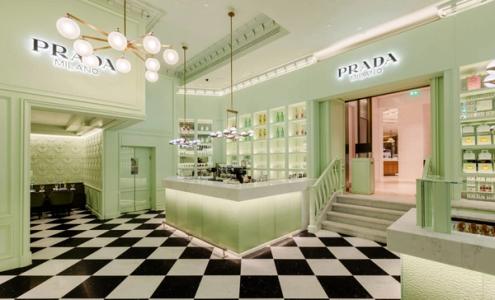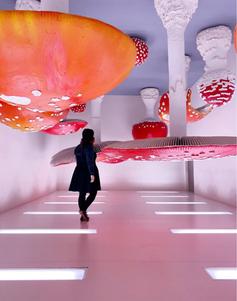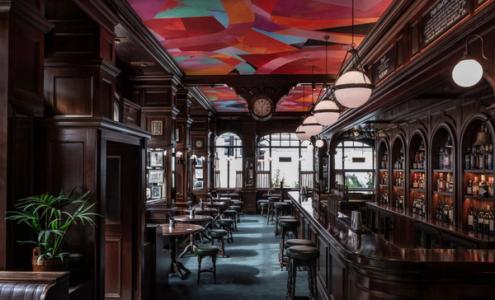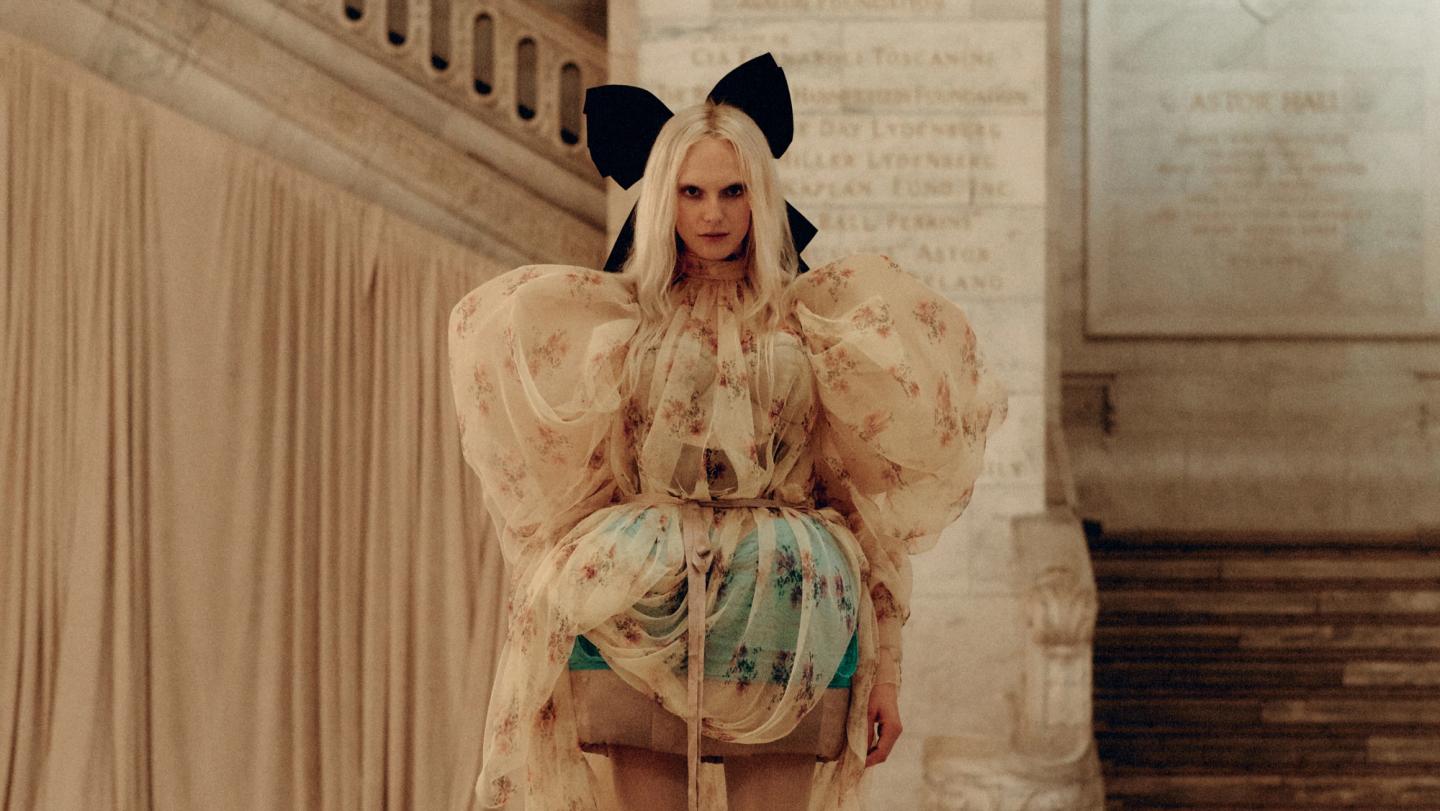
In the mosaic of the modern market, simply offering a product is not enough. Engaging consumers on a deeper, emotional level is now essential for a brand’s survival and success. In this editorial, Ann Binlot explores the art of companies committing themselves to, and establishing their brands as a full-on lifestyle.
Matte OpEd
Fashion
Art
Culture
Date
11/8/2023
Text
Ann Binlot
Introduction
These days, only offering a product isn’t enough; in a world oversaturated with fashion brands, restaurants, boutique hotels, and exercise studios, a brand has to make itself stand out. Brands need to connect with and lure consumers on an emotional level. They should offer a lifestyle their target market aspires to. A lifestyle is more than a product; it’s everything the consumer does. Where they eat, the hotels they book, their fitness routine, the culture they absorb. Lifestyle is a state of mind - whether it’s about giving back to your community or committing to living sustainably, a lifestyle marketing strategy often yields higher results than a product-driven one.
“Researchers have already noted superior economic and financial performances in groups of brands that they define as magnetic: brands capable of engaging, of proposing an original point of view and of influencing a social context,” wrote Stefania Saviolo and Antonio Marazza in the book, Lifestyle Brands: A Guide to Aspirational Marketing. “This category of brands is adopted not only for functional characteristics, but above all, for the symbolism and significance it transmits, allowing a consumer to express his or her identity, to signal status or manifest a sense of belonging to a group.”
Lifestyle brands include fashion labels (Ralph Lauren, Christian Louboutin, Armani, and Diesel), outdoor and athletic brands (Nike, L.L. Bean, Patagonia), design companies (RH, Vipp), art galleries (Hauser & Wirth), restaurants (Nobu), celebrity-led brands (Goop, Poosh), grocery stores (Erehwon), and more.
Miuccia Prada was an unlikely fashion designer. The Prada scion earned a PhD in political science at the University of Milan and was an active participant in the Italian Communist Party. She even took up an interest in miming, training for five years at Milan's Piccolo Teatro. Mario Prada, her grandfather, started the family’s namesake business, a luggage company that offered high-end, meticulously crafted leather steamer trunks, suitcases, and handbags. In 1978 she took over the family business, transforming it into a major lifestyle company some 45 years later.

When Mrs. Prada took the helm, she injected it with new life, taking nylon, an everyday material used for athleticwear, and elevating it to a material used in handbags and backpacks, elevating it into a medium suitable for luxury accessories. A decade later came the launch of Prada’s ready-to-wear collection, and her future was evident; Prada would become one of fashion’s top designers, and the house would be one of the most sought-after Italian luxury labels.
That wasn’t enough for Mrs. Prada; she would go on to transform Prada from just a fashion label into a global lifestyle behemoth. In 1993 she took her love of art and launched Fondazione Prada, a museum in Milan that saw a new tower designed by Rem Koolhaas in 2018 and Bar Luce, a whimsical café designed by famed auteur Wes Anderson. The brand hosted Prada Frames, a series of symposiums on topics like sustainability and materiality with a mix of academics, experts, students, and panels. There’s also Prada Mode, a roving private, members-only pop-up club held during the likes of Frieze Seoul, Art Basel in Miami Beach, and Art Basel in Hong Kong. Prada even expanded into Web3, with an NFT Time capsule collection.







In the United States, Ralph Lauren started his company with a collection of ties in 1967. “It starts with being who you want to be when you’re growing up,” Lauren told Vogue this spring. “I dreamt like everyone else about a life that was good.” The Ralph Lauren world is indeed the good life, embodying the privileged preppy American lifestyle. It expanded into menswear, then into womenswear. In 1978 he went into fragrance with Lauren for women and Polo for men. Lauren’s next target was the American home with the establishment of Ralph Lauren Home in 1983. Ralph Lauren ventured into hospitality in 1999 with the opening of the 98-seat restaurant RL, located next to its world flagship on Chicago’s Magnificent Mile. The move proved to be fruitful; the company added more dining establishments to its portfolio. Ralph’s on Boulevard Saint Germain in Paris in 2010, and Polo Bar in New York in 2015. The Bar at Ralph Lauren, located on Milan’s tony Via della Spiga, opened its doors in 2021. This April it opened a Web3-geared brick-and-mortar that accepts cryptocurrency payments in Miami’s Design District.







What better way to embody a lifestyle than through design? Danish design company Vipp started out in 1939, when Holger Nielsen used a metal press to design a pedal-controlled bin that would become standard in dentist and doctor’s offices. After he passed away, his daughter saw its potential and elevated it from a utilitarian item to a utilitarian design item by selling it to high-end design stores and showing it at design fairs. From there, Vipp expanded its simple, clean aesthetic into furniture, and then into kitchen. In addition, the company holds regular supper clubs, publishes books, and has opened a number of guesthouses in Spain, Italy, and Denmark that people can book and stay in to experience a Vipp-decorated home. For Sofie Christensen Egelund, Nielsen’s granddaughter, the Vipp lifestyle — which is about quality craftsmanship, minimalism, clean aesthetics, a breadth of culture, a sense of wanderlust, and of course, food — is very much about the family’s personal passions. “Being family owned, you sometimes do things that you are very passionate about,” said Chrstiensen Egelund. “So for example, turning old buildings to something that's very interesting. Both my mom and my brother and I are very passionate about old buildings, architecture, design, food, art — this whole universe.”
Nike started out in 1971 by University of Oregon track athlete Phil Knight and his coach Bill Bowerman with a running shoe called the Waffle Trainer. It has since evolved into a global behemoth that prides itself on the idea that anybody who has a body can be an athlete. In recent years the brand has been scaling its Nike Women division with a series of products, apps, events, and more that celebrates a holistic approach to health that includes Nike Well Collective stores. “We've been innovating around nutrition, sleep, rest recovery for our elite athletes for 50 years, we haven't taken all of those holistic facets, really to the consumer externally,” said Liz Weldon, VP, Global Nike Women's Brand Management. And that's what we felt we had an opportunity to do so that people could be like, Okay, there is a trusted source. They've been in this for 50 years, they're connected with the best scientists and experts in the industry. And there's one place you can go.”
Lifestyle can go from something lowbrow, like health to highbrow art. Hauser & Wirth, the blue-chip gallery founded by Iwan Wirth, Manuela Wirth and Ursula Hauser in Zurich in 1991, is growing into a full-fledged lifestyle company that does more than sell art by the likes of Amy Sherald, Nicolas Party, Jenny Holzer, Mark Bradford, and Louis Bourgeois to collectors; it encompasses the entire lifestyle of the collector. Along with locations in New York, London, Hong Kong, Zurich and Los Angeles, it also has Manuela, a restaurant its Los Angeles compound, a five-star hotel in the Scottish Highlands called The Fife Arms, Durslade Farmhouse, a six-room guest house and adjacent Roth Bar & Grill in Somerset, England, and two establishments in London: the members-only Groucho Club in Soho, and The Audley, a Mayfair pub.






An aspirational lifestyle is more seductive than a product and it also gives companies an opportunity to scale, expand, and increase cachet, relevancy, and revenue. A strategy that surrounds a specific lifestyle enables companies to attract a specific target market, build stronger emotional ties to their customers, and helps differentiate the brand from its competitors.
More Key Lifestyle Companies to Know
RH: The company started out as furniture company Restoration Hardware in 1979. Founded in the San Francisco Bay Area, it went public and rebranded itself as RH in 2012. It opened Three Arts Café, its first hospitality concept in Chicago in 2015. It also has 15 fine-dining restaurants, a New York guest house, and a six-establishment hospitality concept in the Cotswolds in England. RH has also unveiled a private jet, modeled after the Gulfstream G65, and a yacht.
EREWHON: What used to be a Los Angeles health food store targeting hippies has turned into a full-on high-end lifestyle brand complete with merch, fashion collaborations with brands like Casablanca and Citizens of Humanity, viral smoothies made in collaboration with Kourtney Karadashian, Hailey Bieber, and its latest smoothie, a rainbow concoction made in partnership with Cactus Plant Flea Market.

L.L BEAN: The Freeport, Maine outdoor brand does more than carry outdoor equipment and apparel, it gathers the community for outdoor concerts, cross country skiing lessons, and more. It also has a home store. Recently it became a gorpcore go-to, especially for its iconic Boat and Tote bag, which turned into a viral accessory when people started embroidering ironic terms instead of their initials.
GOOP: Gwyneth Paltrow started Goop out as a newsletter before growing it into an entire lifestyle company complete with an editorial platform, ecommerce, a beauty line, a wellness line, and clothing line. Women want Paltrow’s lifestyle, and we all know she has excellent taste in some things with a few eyebrow-raising products — remember the This Smells Like My Vagina candle? There are also cruises in collaboration with Celebrity Cruises called Goop at Sea, as well as wellness symposiums.
KITH HYPEBEAST: Rejoiced when Ronnie Fieg launched Kith in 2011 as a footwear retailer before adding fashion and ice cream to the mix with Kith Treats. Kith tapped Alex Mustonen and Daniel Arsham of Snarkitecture to design the stores. It’s also done collaborations with Coca-Cola, Versace, and Cap’n Crunch. The streetwear retailer also designed a car with BMW

Recent Articles



